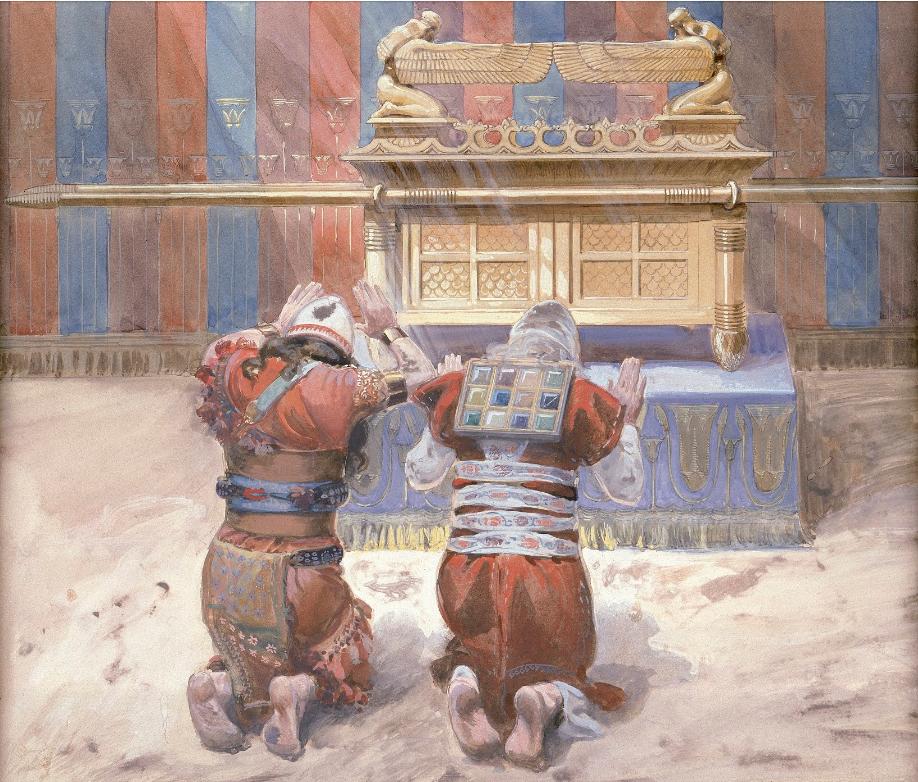
Parashat Terumah
♦
Parashat Terumah
Moya Hegarty
07 February 2019
I was reminded of Harambee days in Kenya as I read the Torah portion for this week. Harambee means “all pulling together” in Swahili and it encompasses two activities; donations – both animals and money, channeled towards a building project. The energy generated by the act of freely given donations and the purpose wherein those were used on behalf of the community, was very palpable. A glimpse of the energy released to build a visible structure to house the Divine presence can be glimpsed in the fact that a halt had to be put on the flow of gifts that flowed so generously from the people. “The people are bringing more than is needed for the work G-d has ordered to be done” (Ex.36:5). Donations, sanctuary and tabernacle (mishkan) – are at the heart of parashah Terumah.
“The Eternal One spoke to Moses, saying, ‘Tell the Israelite people to bring Me gifts, you shall accept gifts for Me from every person whose heart is so moved….and let them make Me a sanctuary that I may dwell among them’ (Ex 25:1, 8). The stress is on G-d’s dwelling among the people not on the building. The Terumah Commentary 177, reads not “I will dwell in it”, but rather, “I will dwell in them”. Terumah can be translated as ‘a contribution’ but Rabbi Jonathan Sacks points out that it has a subtly different meaning for which there is no English equivalent. It means ‘something you lift up’ by dedicating it to a sacred cause. I glimpsed a moment like that at a Harambee day for building a church, when a young boy came up with his contribution, which was one copper coin. He lifted it up in front of the crowd and announced that this was for God. His statement met with awed silence by those present.
The description of the building of Solomon’s Temple in the Haftarah brings out the contrast between what is freely given from the heart and what is coerced. “King Solomon raised a levy throughout Israel for forced labor: the levy numbered thirty thousand men. He sent these to Lebanon in relays, ten thousand a month; they spent one month in Lebanon and two months at home”(1Kgs 5:27-28). In an unnerving way the building smacks something of the tyranny of the building programs of Egypt during the exile there.
The gifts necessary for the building are named beginning with gold, silver and copper. It is interesting that the copper is given the name “snake metal” from the Hebrew nachash. It “is a substance that recalls the stubborn impudence of the primordial snake’s denial of God.” (181) Is there a hint there that what we resist in our contributions can through integration into the fabric and structure of the sanctuary be open to transformation, not by exclusion but by inclusion into the whole?

Moses and Joshua in the Tabernacle James Jacques Joseph Tissot (French, 1836-1902) and Followersc. 1896-1902
“Moses is standing in the centre and gesturing with his hand to a piece of paper inscribed with laws. At this point of the Bible story, the people of Israel were setting off on their long trek through the desert towards the Promised Land. Jethro, Moses’ father-in-law, advised Moses to lay down laws and appoint judges. He also advised him to delegate some of his judicial responsibilities to other wise men. In the bottom right-hand corner, Jethro and his wife are starting out on the journey back to their own country, accompanied by Moses’ wife and his two sons”.
Source: Google Arts & Culture
This week’s teaching commentary was prepared by
Moya Hegarty osu
moyaosu@eircom.net, Sligo, Ireland. Bat Kol Alum, 2007/2015 [Copyright 2019]
PLEASE NOTE: The weekly Parashah commentaries represent the research and creative thought of their authors, and are meant to stimulate deeper thinking about the meaning of the Scriptures. While they draw upon the study methods and sources employed by the ISPS-Ratisbonne, the views and conclusions expressed in these commentaries are solely those of their authors, and do not necessarily represent the views of ISPS-Ratisbonne. The commentaries, along with all materials published on the ISPS-Ratisbonne website, are copyrighted by the writers, and are made available for personal and group study, and local church purposes. Permission needed for other purposes. Questions, comments and feedback are always welcome.
Share this with your friends
Institute Saint Pierre de Sion – Ratisbonne – Christian Center for Jewish Studies
Congregation of the Religious of Our Lady of Sion
Contact us:
secretary@ratisbonne.org.il
26 Shmuel Ha-Naguid Street – Jerusalem
Subscribe to Newsletter

No responses yet